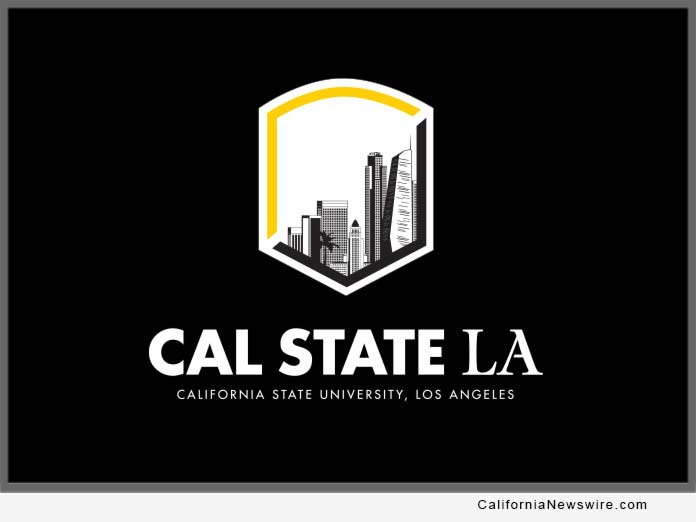LOS ANGELES, Calif. /California Newswire/ — Cal State LA researchers are joining the fight against COVID-19, developing tools that government officials and health care workers can use to make decisions during the global pandemic.

During the past month, as coronavirus cases escalated across the United States, teams of Cal State LA faculty, students and staff have focused their academic research on areas that can help with the response to the pandemic.
Researchers in the College of Business and Economics created an interactive data visualization dashboard that forecasts the number of COVID-19 cases and deaths by region in the U.S. and around the world. A faculty-student team in the College of Engineering, Computer Science, and Technology developed a predictive model using artificial intelligence (AI) and machine learning that determines COVID-19 patient health risks and predicts mortality risk to help hospitals and medical facilities.
“I commend our faculty, students, and staff for their continued dedication to engagement and service for the public good during this difficult and uncertain period,” said Cal State LA President William A. Covino.
Executive Vice President and Provost Jose A. Gomez added: “These research contributions exemplify the commitment of our entire University community as we work together to fulfill Cal State LA’s mission amid this pandemic.”
Dalya (Manatova) Dauletbak, a 2019 graduate of the Master of Science in Information Systems program in the College of Business and Economics, was inspired by Johns Hopkins University’s COVID-19 Map and wanted to develop a simple tool to help people better understand the COVID-19 situation in their regions, while also making it easier to make comparisons with other geographical areas.
The dashboard, developed using Tableau data visualization software, allows users to filter by state or region of interest and to see the trends of confirmed and forecasted new cases as well as deaths over time, which can help with resource planning, Dauletbak said.
The tool sources data from the Center for Systems Science and Engineering at Johns Hopkins University and is updated automatically daily.
“I believe that help can be found on different scales and from different domains, and even a small opportunity to help during this outbreak means a lot to me,” said Dauletbak, who works as an information security data analyst at Cal State LA. “Keeping people informed with the correct data is one of the keys to flattening the curve.”
Dauletbak is a member of the Big Data AI Center, which is housed in the Department of Information Systems in the College of Business and Economics. Dauletbak worked on the project under the direction of Professor Jongwook Woo, a faculty member in the department and director of the Big Data AI Center.
“Technology has developed to make the lives of human beings easier and safer,” Woo said. “I am proud that the Big Data AI Center can use big data to contribute to the community quickly with the knowledge that people need now in this crisis.”
The rapid spread of COVID-19 around the world and lack of sufficient medical resources prompted College of Engineering, Computer Science, and Technology Professor Mohammad Pourhomayoun and graduate student Mahdi Shakibi to focus their research on using AI and predictive analytics to help medical decision-making and support doctors and caregivers.
Pourhomayoun, an assistant professor of computer science, and Shakibi used AI and machine learning algorithms to develop a predictive model to determine the health risks and predict the mortality risk of patients with COVID-19 based on symptoms, physiological information, and demographic data.
Using data from 117,000 patients worldwide with laboratory-confirmed COVID-19, the model results have demonstrated an overall 93% prediction accuracy, Pourhomayoun and Shakibi reported in an article posted publicly online. They posted the article so medical facilities and other researchers can access the research while it undergoes peer review. The article has been submitted to the journal, IEEE Transactions on Biomedical Engineering.
The model can help hospitals and medical facilities decide who needs to get attention first, which patients have higher priority to be hospitalized, and which patients can stay at home, said Pourhomayoun, who also serves as director of the AI and Data Science Research Lab in the College of Engineering, Computer Science, and Technology.
The model can also help medical workers and caregivers triage patients if the healthcare system becomes overwhelmed and eliminate delays in providing necessary care, he said.
Pourhomayoun said he has begun discussions with health officials and local government about the potential use of the model.
“We have to remember that the main players and the real heroes are our doctors, nurses, and all health care workers risking their lives to save people on the front lines of the coronavirus fight,” Pourhomayoun said. “But I think everyone with any expertise can try to help. Every researcher in every field of research—whether it is medicine or biology or computer science or engineering or social science—can contribute to help address the COVID-19 crisis.”
# # #
Cal State LA is ranked number one in the nation based on the upward mobility of its students. Founded in 1947, Cal State LA is the premier public comprehensive university in the heart of Los Angeles and is dedicated to the mission of engagement, service, and the public good. The University serves more than 26,000 students and more than 250,000 distinguished alumni, who are as diverse as the region we serve. Led by an award-winning faculty, the University offers nationally recognized programs in science, the arts, business, criminal justice, engineering, nursing, education and the humanities.
Cal State LA is home to the critically-acclaimed Luckman Fine Arts Complex, Pat Brown Institute for Public Affairs, Hertzberg-Davis Forensic Science Center, Hydrogen Research and Fueling Facility, Billie Jean King Sports Complex and the TV, Film and Media Center. For more information, visit www.CalStateLA.edu.







